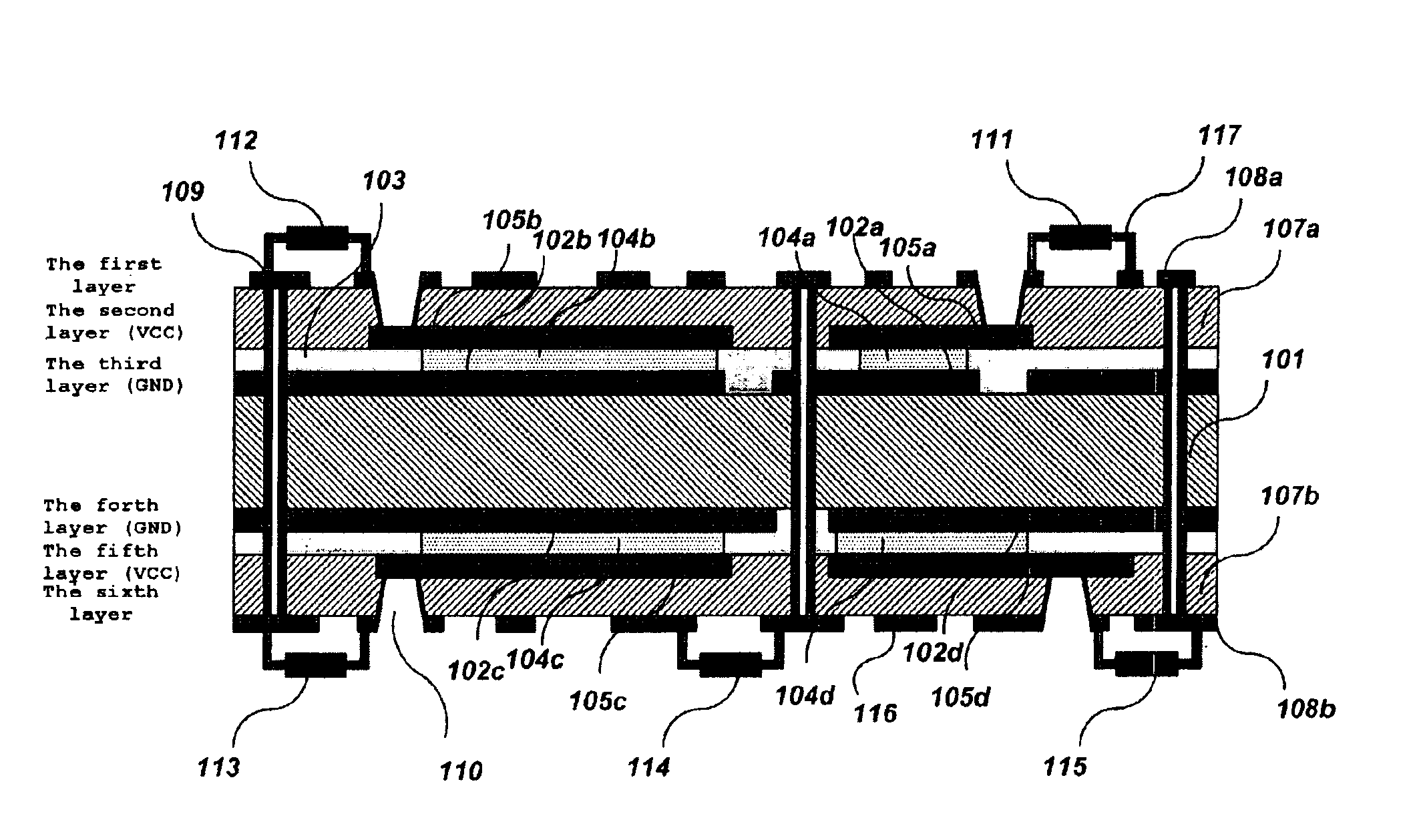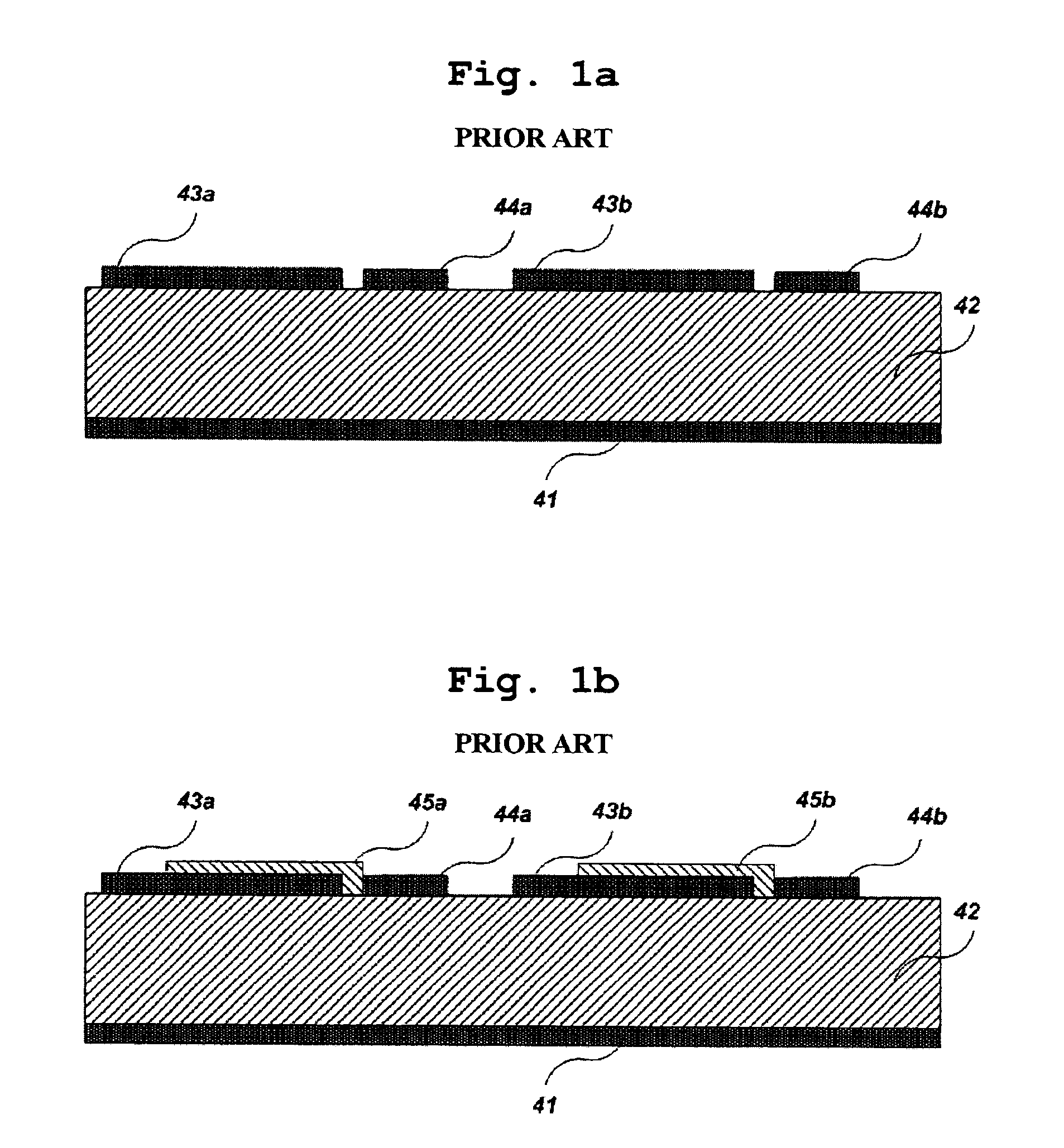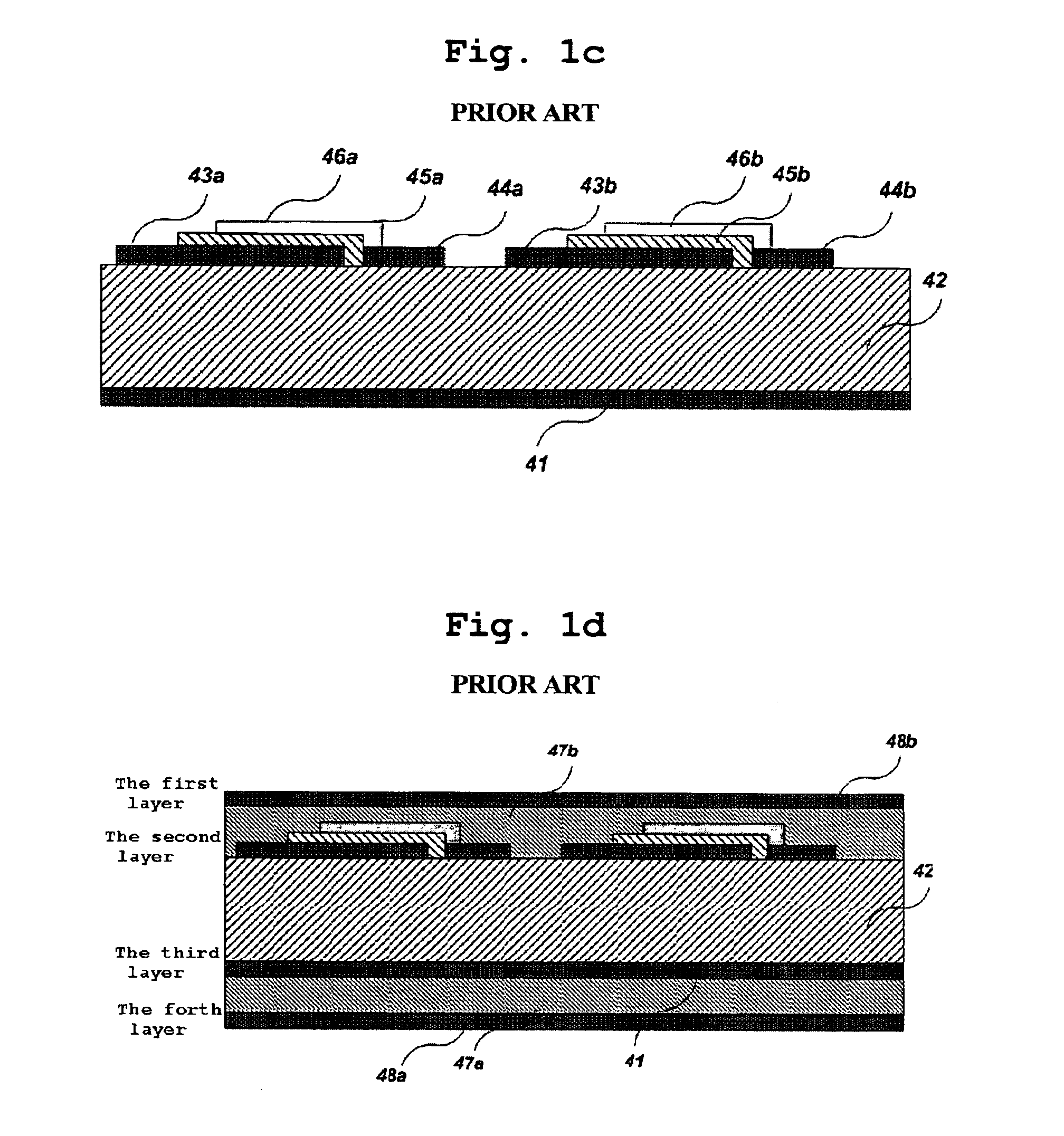Printed circuit board with embedded capacitors therein, and process for manufacturing the same
- Summary
- Abstract
- Description
- Claims
- Application Information
AI Technical Summary
Benefits of technology
Problems solved by technology
Method used
Image
Examples
Embodiment Construction
[0090]Hereinafter, a printed circuit board with embedded capacitors therein and a process for manufacturing the printed circuit board according to the embodiments of the present invention will be explained in more detail with reference to the accompanying drawings.
[0091]FIG. 6 is a cross-sectional view showing a printed circuit board with embedded capacitors therein according to the present invention, the capacitors being formed by the application of a photosensitive insulating resin and a polymer capacitor paste
[0092]Referring to FIG. 6, capacitors are formed by applying a photosensitive insulating resin 103 to copper foils formed on a copper clad FR-4 101, applying capacitor pastes 104a to 104d to etched regions of the photosensitive insulating resin 103, and forming top electrodes 105a to 105d on surfaces of the photosensitive insulating resin. The printed circuit board with embedded capacitors therein according to the present invention is commonly composed of six layers wherein ...
PUM
| Property | Measurement | Unit |
|---|---|---|
| Temperature | aaaaa | aaaaa |
| Length | aaaaa | aaaaa |
| Thickness | aaaaa | aaaaa |
Abstract
Description
Claims
Application Information
 Login to View More
Login to View More - R&D
- Intellectual Property
- Life Sciences
- Materials
- Tech Scout
- Unparalleled Data Quality
- Higher Quality Content
- 60% Fewer Hallucinations
Browse by: Latest US Patents, China's latest patents, Technical Efficacy Thesaurus, Application Domain, Technology Topic, Popular Technical Reports.
© 2025 PatSnap. All rights reserved.Legal|Privacy policy|Modern Slavery Act Transparency Statement|Sitemap|About US| Contact US: help@patsnap.com



